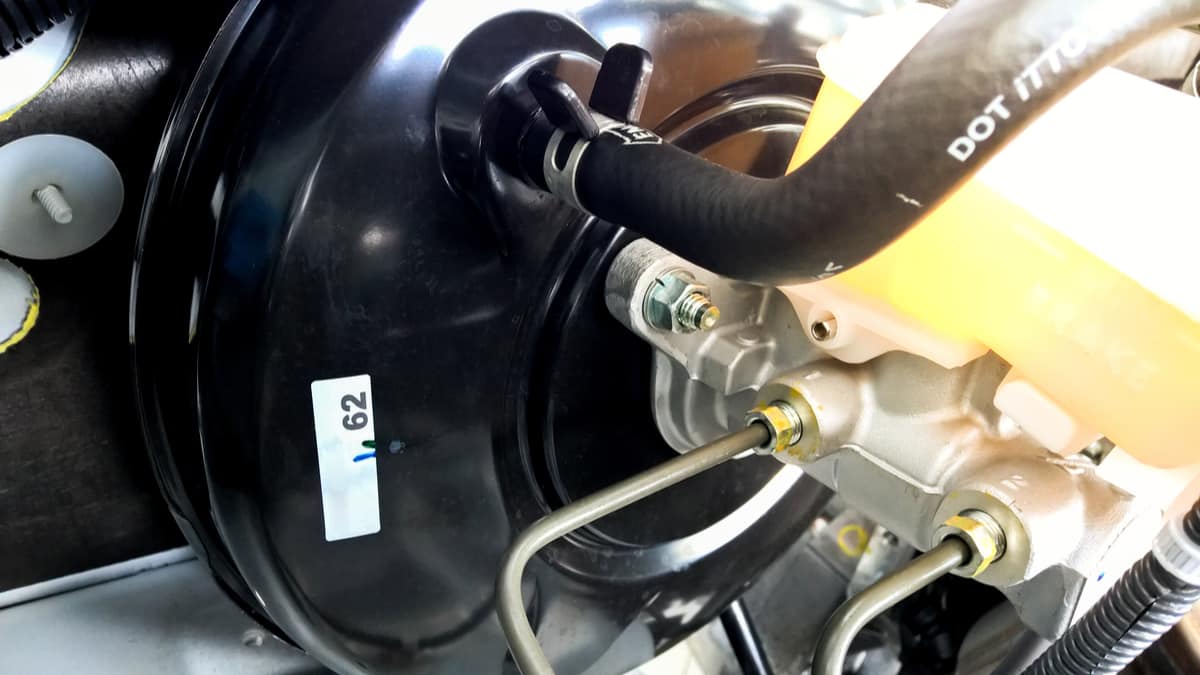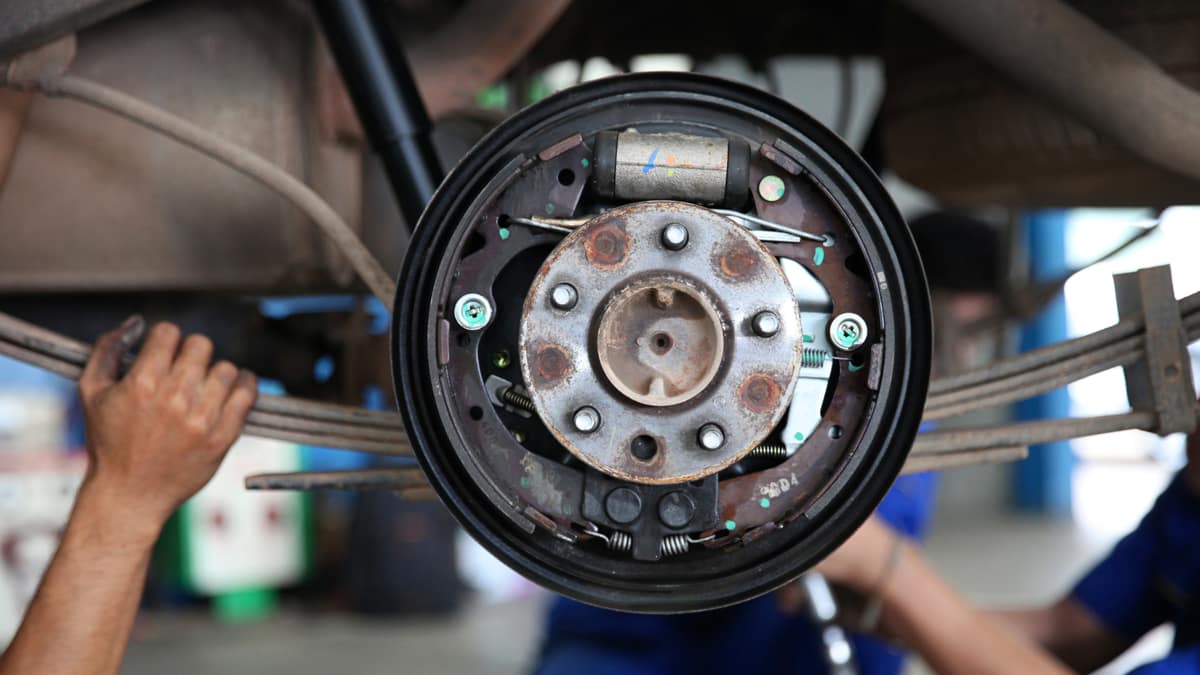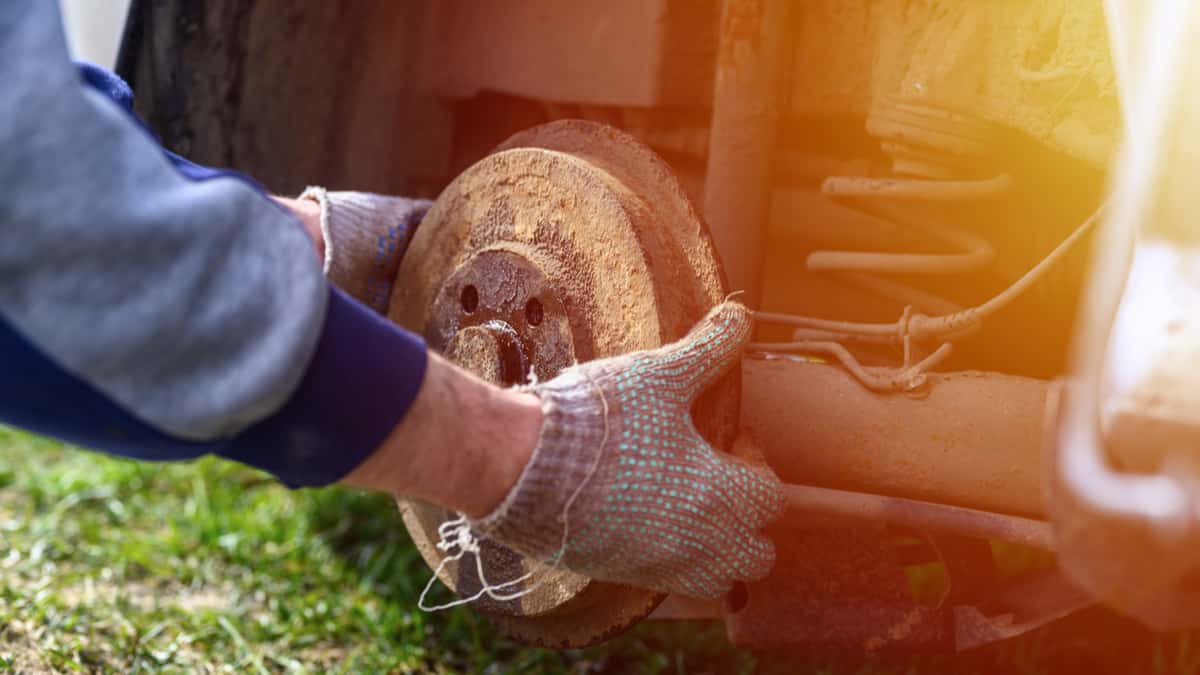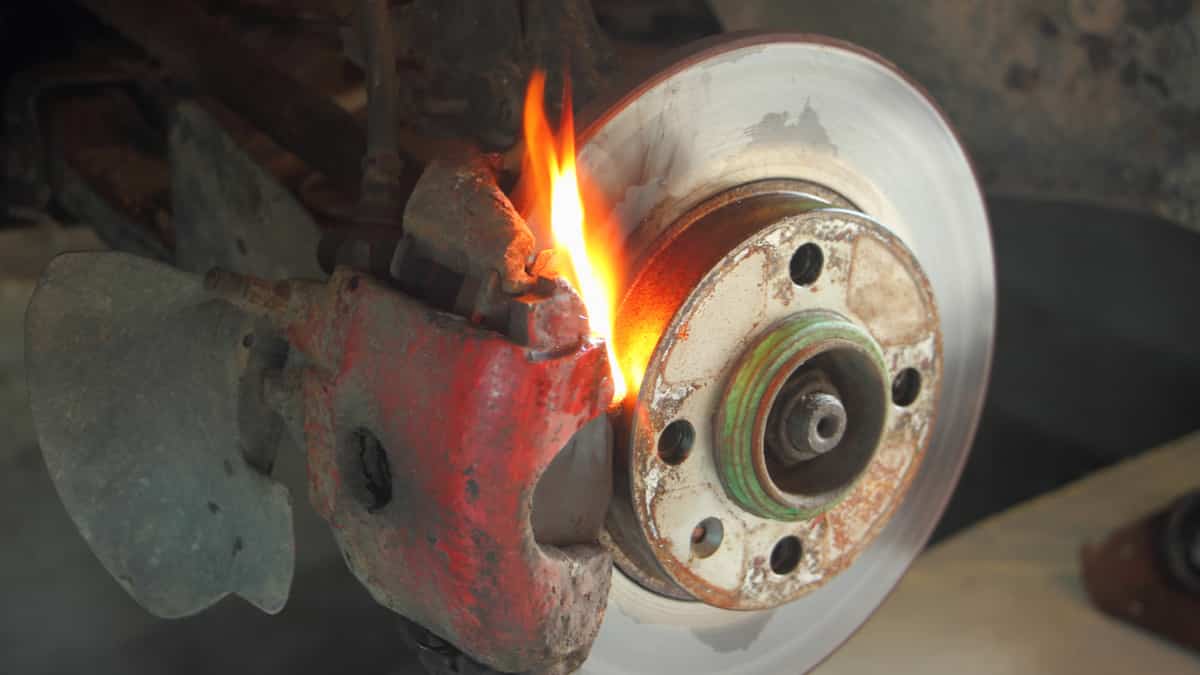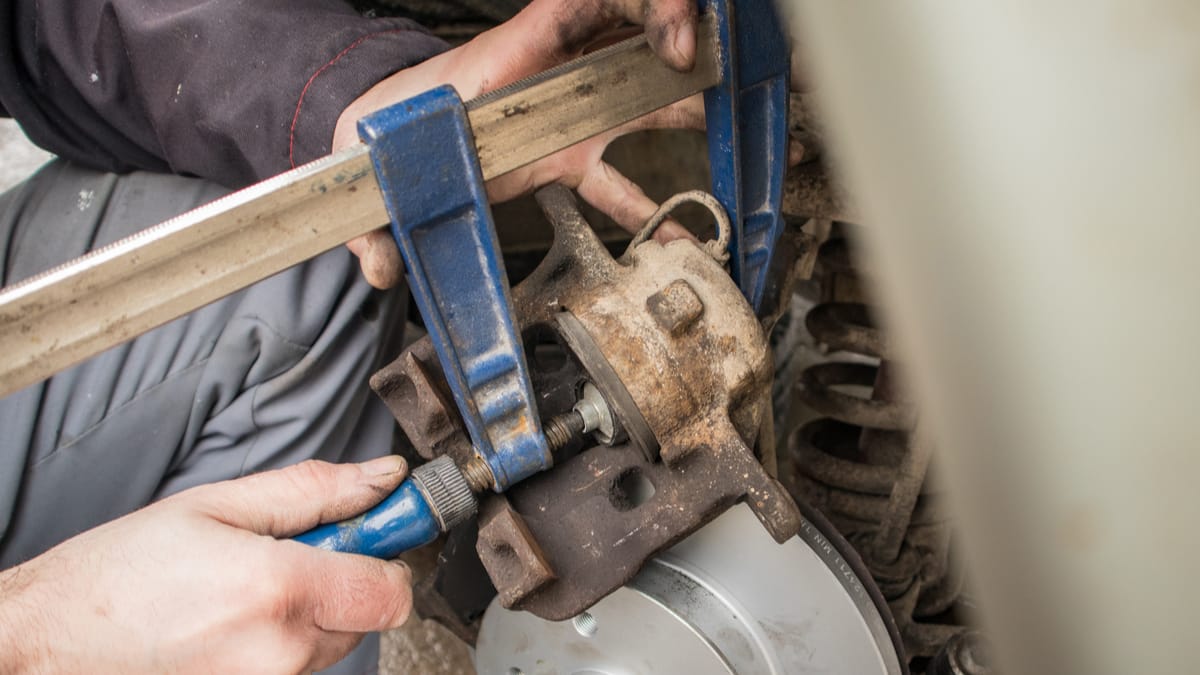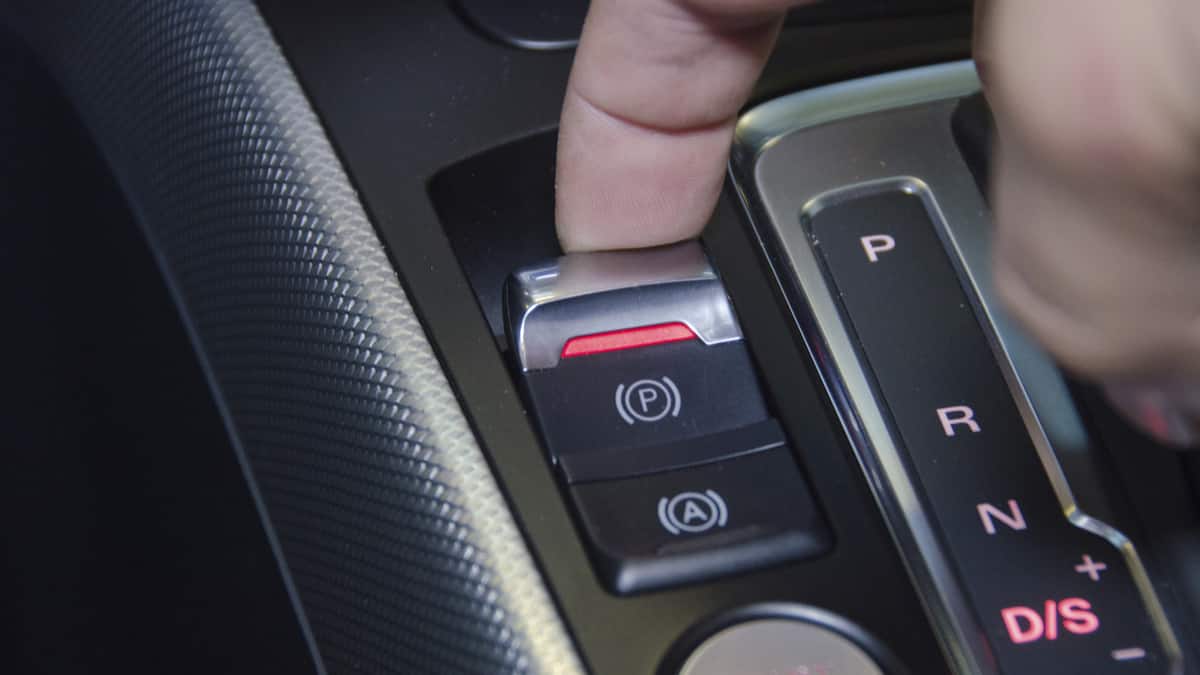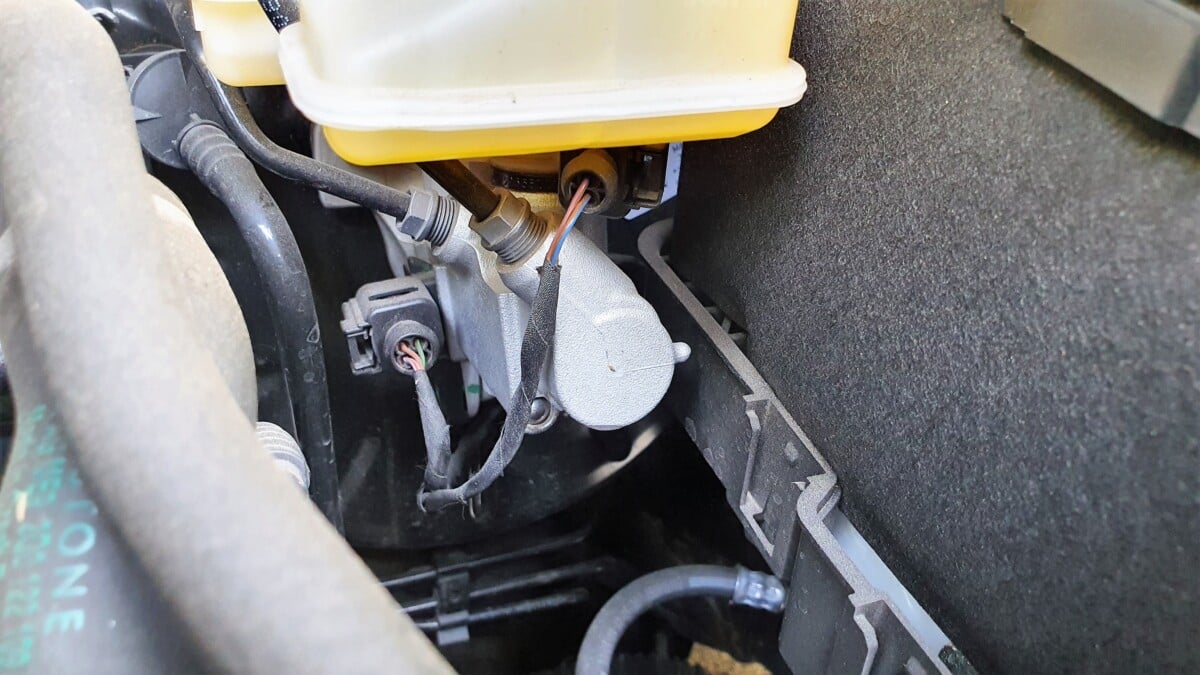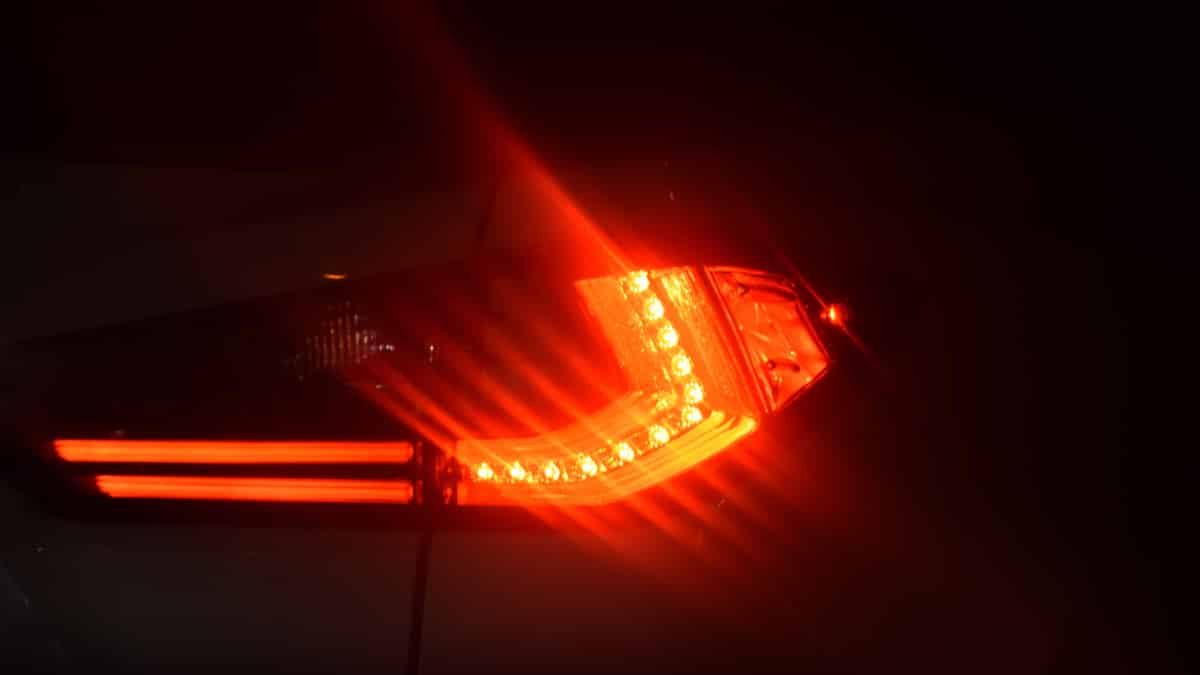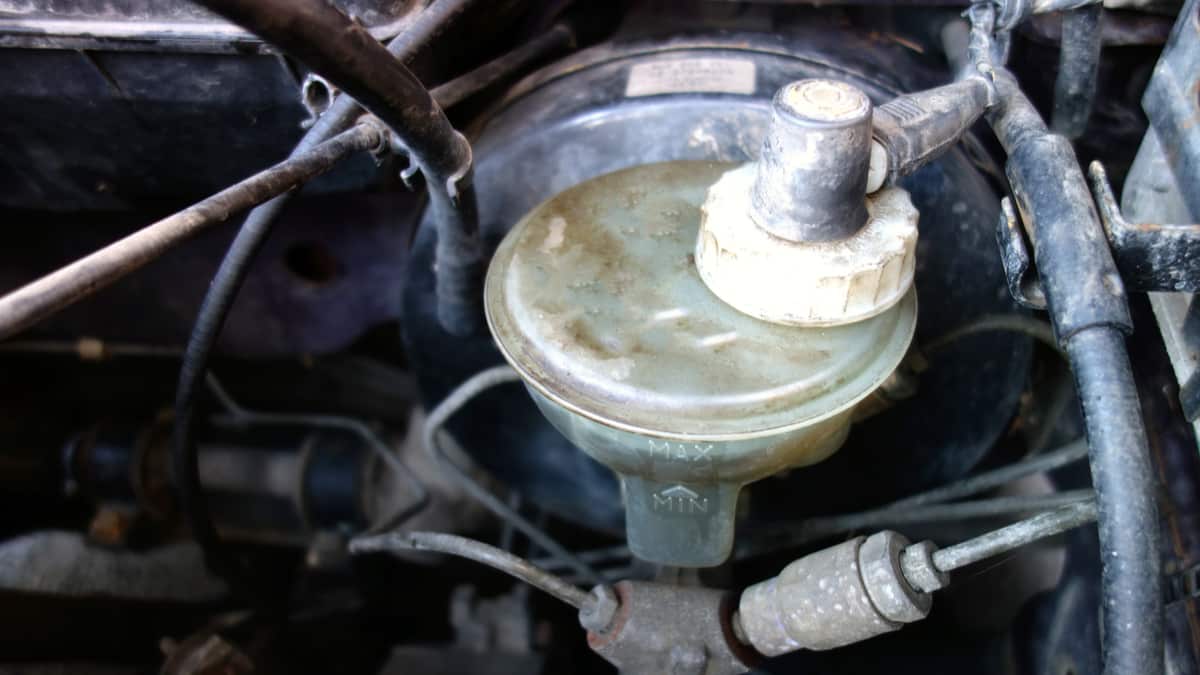The car braking system is imperative to ensure you stop your vehicle before an accident occurs. Yet, with so many parts making up the disc braking system, it’s also critical to keep up with maintenance and repairs. Otherwise, the brakes may fail when they are needed the most. For that reason alone, it’s necessary to look at the symptoms of a bad brake caliper, so you can tell it apart from other possible failures.
In this guide, we evaluate the most common issues occurring when a brake caliper fails. We also look at the function of the brake caliper, evaluate its location and discuss how to diagnose it when it’s bad. Once we show you the replacement cost of a bad brake caliper, you’ll also find some FAQs.
Symptoms Of A Bad Brake Caliper
When a brake caliper fails, the car starts to pull to that side while braking. You may also experience dragging brakes, reduced stopping power and uneven brake pad wear. There could be a brake fluid leak involved, a soft or spongy brake pedal, additional noises and a burning smell.
Take a closer look at these eight most common symptoms.
1. Car Pulls To One Side When Braking
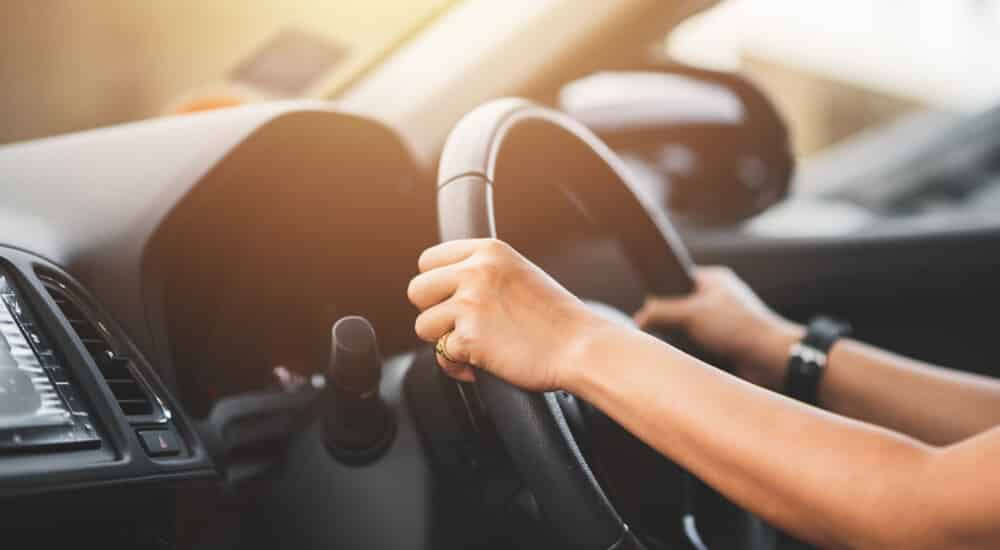
When a caliper seizes, it won’t retract back into its original position. Therefore, it continues to push against the brake pad, leading to dragging along the rotor.
While the caliper is stuck, the vehicle inevitably pulls to the side, especially while braking, because the force is unequal. You may have to counteract the pulling by steering to the other side while braking.
2. Dragging
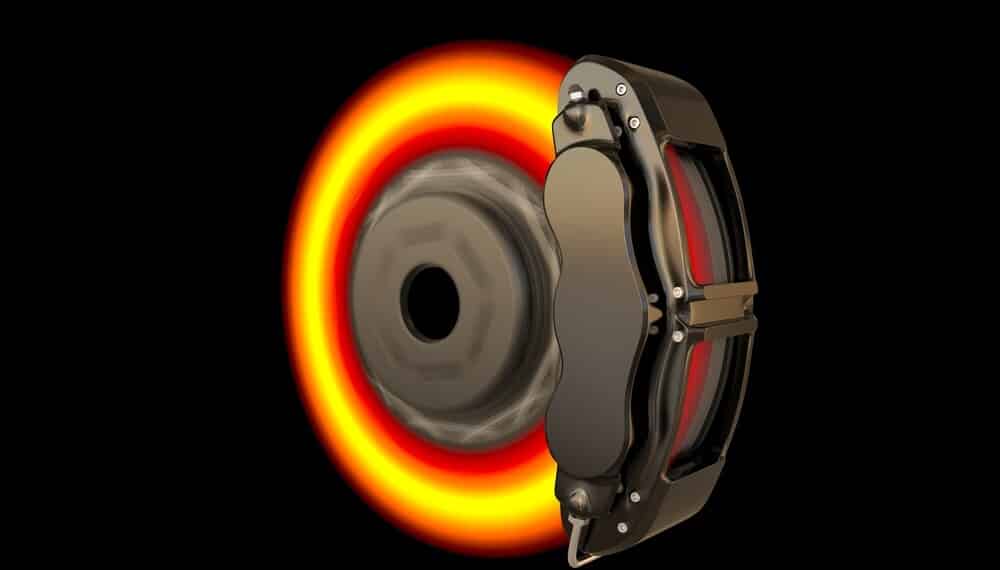
For the very same reason, you may also feel the car dragging on one side while driving. The stuck caliper pushes the pads into the rotor even when you aren’t braking.
It’s going to create a similar sensation to what it feels like when you have a foot on the gas and another on the pedal, even though you aren’t actually braking. Continuing to drive like this only creates unnecessary wear to the brake pads and rotors.
3. Reduced Stopping Power
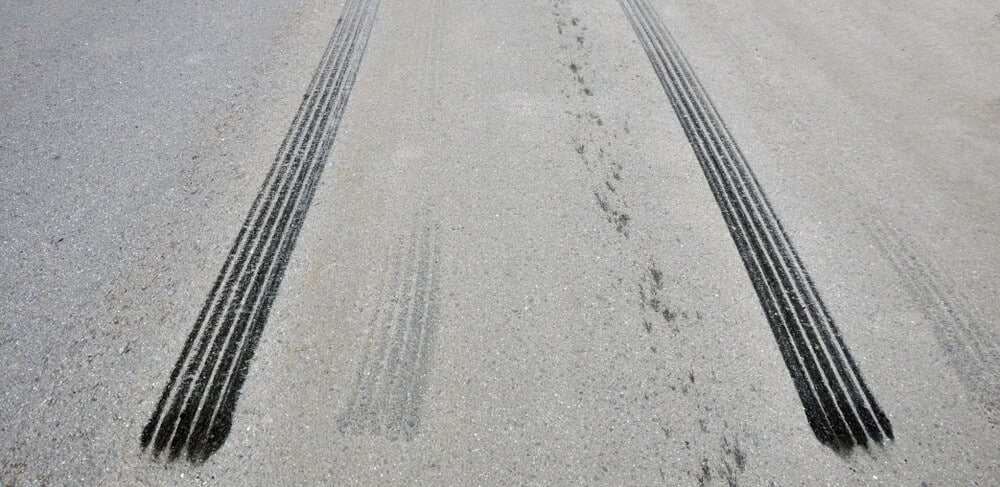
According to the NHTSA, brake problems cause more than 20% of accidents. That’s why it’s so important to make sure your brakes provide the necessary stopping power they were designed to give you.
When any part of your brakes isn’t working as it was intended, braking power can be reduced. This puts you at a higher risk of an accident, so you don’t want to overlook the issue.
4. Uneven Brake Pad Wear
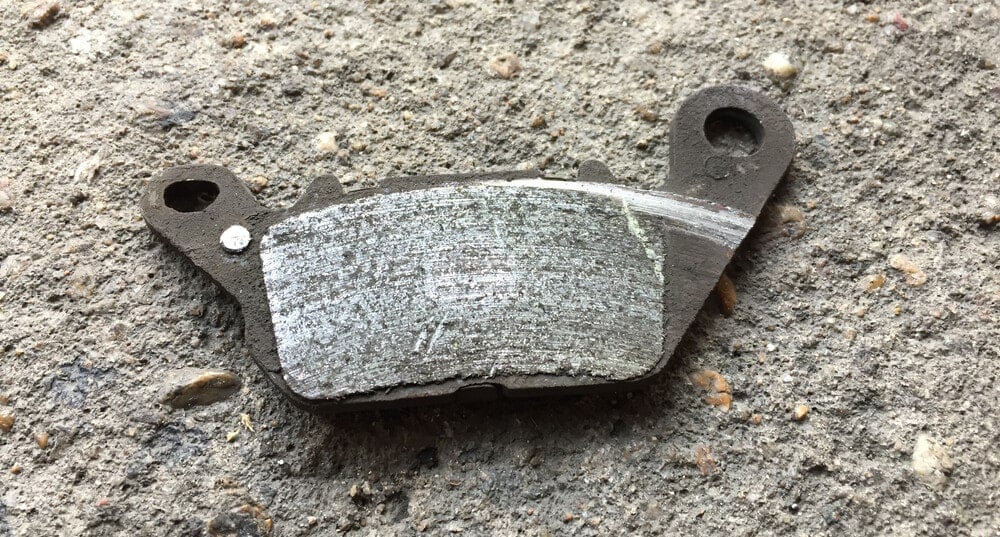
As the caliper pins stick, the brake pads will inevitably wear faster. With the brake pads engaged more than necessary, the material starts to wear prematurely.
It isn’t just the brake pads you need to worry about. Because the pads are dragging against the rotor, that surface is also going to wear down unnaturally.
RELATED: 5 Symptoms of Worn Brake Pads
5. Brake Fluid Leak

In normal operating conditions, you shouldn’t need to add any brake fluid. It remains intact in the braking system unless there’s a leak. When a caliper fails, fluid can start to leak around it. The fluid would be coming from the piston seal with the caliper activated.
In some cases, you may notice the brake fluid level dropping before noticing any other symptoms. A quick visual inspection would reveal where the fluid is coming from, leading you to the bad caliper.
Related: 5 Symptoms of a Brake Fluid Leak
6. Soft or Spongy Brake Pedal

The stuck caliper leads to a soft or spongy brake pedal, but usually, because the fluid is leaking. It can also be caused by air in the brake lines or occurs when the pads become overheated.
There’s also the chance that you are feeling a strange pedal because of the additional clearance. A seized caliper creates clearance between the pad and rotor, which makes the whole system feel different.
7. Brake Noises
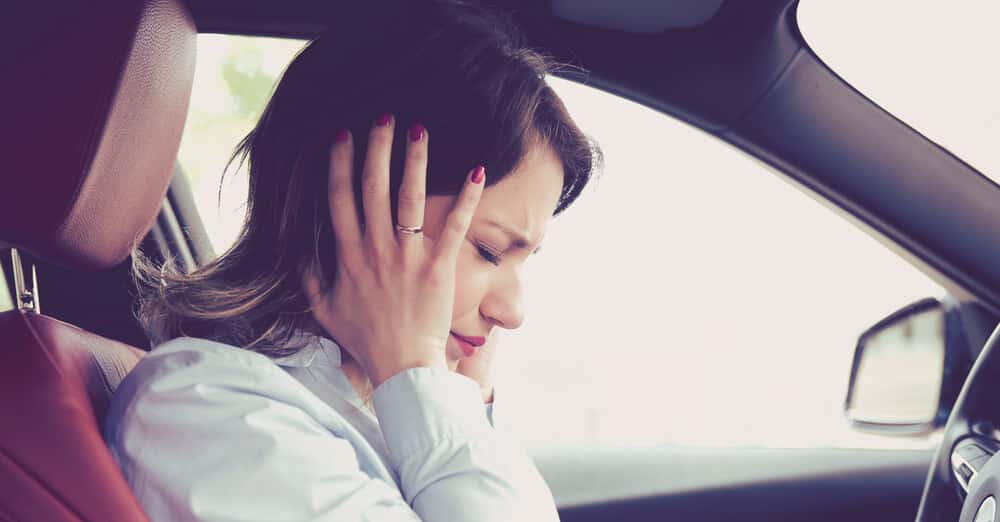
As the brake caliper sticks, you may hear some interesting noises. If the problem stems from the brake caliper bracket breaking, you may hear clunking. This can also cause the wheel to lock up.
The brakes may also squeal, similar to what you hear when the pads are low. Yet, you may hear this noise even when the brake pedal isn’t depressed because the caliper is causing the pad to remain engaged. If the problem gets too bad, both the pads and rotor are going to wear, eventually causing a grinding noise. This would be your last warning before brake failure occurs.
8. Burning Smell
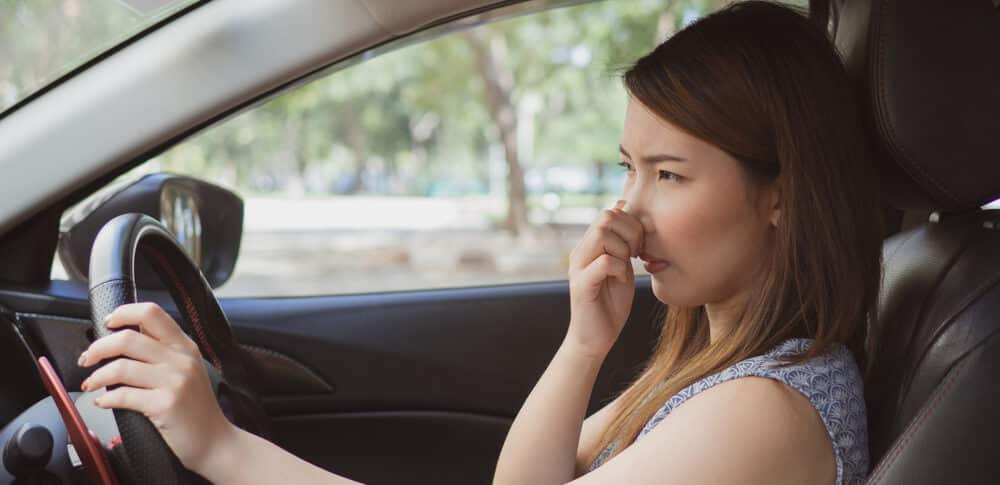
The final warning sign is a burning smell. The burning smell created by a stuck caliper is unique because it’s reminiscent of the odor from overheating brakes. It’s not going to smell like burning electronics or an overheated engine.
With the brake pads constantly engaged, the material becomes too hot. The biggest problem after noticing this smell is that the brakes aren’t going to work as intended once they become too hot. This problem further leads to a loss of brakes.
What’s The Function Of A Brake Caliper?
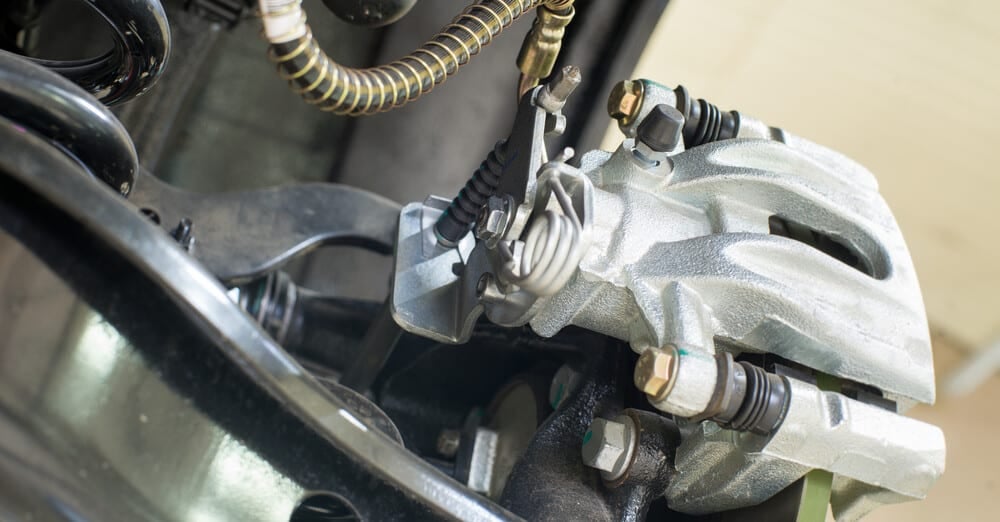
The brake calipers are responsible for holding the pad and pistons. When you push on the brake pedal, the caliper pistons squeeze the pads into the rotor. This friction causes the wheels to slow down and eventually stop.
Calipers support the pads located on both sides of the rotor. The pistons are responsible for converting the pressure received from the master cylinder into the force that’s going to push the brake pads into the rotor.
As you let off the brake pedal, hydraulic fluid runs back to the master cylinder, allowing the caliper to return to its original position. For the calipers to function in unison, there must be equal amounts of hydraulic fluid sent to each one. However, with one caliper stuck, it will receive more fluid than the other brakes, creating an imbalance.
Where Are The Brake Calipers Located?
The brake caliper is part of a disc braking system. Drum brakes use wheel cylinders instead. On a disc brake system, the caliper is located on the caliper mount. The front brake caliper mount is located on the steering knuckle, while the rear caliper mount is found near the wheels.
The brake caliper houses both the pads and pistons. You’ll also see brake lines running to the caliper to transfer hydraulic fluid.
How Do You Diagnose A Brake Caliper?
It isn’t as difficult as you may believe to diagnose a bad caliper. If you have some general experience and don’t mind ripping into the brake system, you can figure out what’s going on with several different methods. However, these guidelines are generalized and should never supersede what’s found in the manufacturer’s service manual.
1. Check The System For Leaks
If the brake pedal feels soft or spongy, your first step is to check for a leak. While a leak could occur near a bad caliper, you want to first make sure that there’s not a leak somewhere else in the system that needs to be dealt with.
When the caliper is to blame, you may see fluid dripping from the piston. Leaking brake fluid is often brown or tan.
2. Inspect The Brake Pads
A stuck caliper leads to uneven brake pad wear. Therefore, you may be able to recognize the problem simply by looking at the pads. If one is wearing unusually, it’s possible that the caliper is stuck.
You should also check the sliders to make sure they aren’t binding. If your car has fixed calipers and there are no sliders or the sliders seem to be okay, move on to our next step.
3. Use A Tool To Check Piston Operation
A stuck piston can lead to a caliper issue. When the piston remains stuck in the engaged position, it causes brake drag, pulling to one side and uneven pad wear. Here are some steps to checking the pistons.
- Support the car on jack stands.
- Turn the wheel assembly by hand.
If you have trouble turning the wheel, the caliper may be pushing into the pads and could be stuck.
You can also attempt to push the piston back into the bore to see how it works. Here are some steps for this check.
- Support the car on jack stands.
- Remove the wheel assembly.
- Unbolt the caliper from its mounting bracket.
- Pull it from the rotor, but don’t unbolt the hose.
- With a disc brake spreader or C-clamp, push the piston into the bore. Watch the master cylinder carefully to make sure fluid doesn’t get pushed out.
Some calipers need to be pushed with a special wind-back tool. This is necessary with many rear calipers that have an integrated parking brake. You may also need to use your compatible scanner to place the system in service mode.
A functioning caliper piston pushes all the way back into its bore. If it’s bad, it will be difficult to push back or it won’t go at all.
How Much Does It Cost To Replace A Brake Caliper?
On average, expect to pay between $500 and $800 to have a brake caliper replaced. This estimate depends heavily on what type of vehicle you drive and the local labor costs. If you can replace the caliper yourself, you may only spend $200 to $550 for the parts.
There’s also the option to rebuild the caliper. While this lowers your repair costs, it does take some time to perform. To rebuild the caliper, you need to install new seals, pin sleeves, pistons and guide pins.
Is it OK to drive with a bad brake caliper?
No, you should have the caliper replaced immediately. With a bad caliper, you are allowing other damage to the braking system. Additionally, it could hinder your braking ability, which puts you at risk for an accident.
Can I replace just one brake caliper?
If only one caliper is damaged, you should still replace both sides. When you replace one side, there could be a braking imbalance, with one working faster than the other. This problem can lead to premature brake pad or rotor wear, decreased braking power and uneven tread wear.
Is it easy to fix a brake caliper?
It’s normally best to replace the entire brake caliper assembly when there’s a problem. With most vehicles, this process is easy to do if you are familiar with working on brakes. However, if you have an electronic parking brake, there could be additional precautions you need to take.
How many miles do brake calipers last?
Brake calipers rarely last the lifetime of the vehicle, but they should last longer than most brake pads. On average, you can expect the brake calipers to last 75,000 to 100,000 miles, or maybe ten years. With regular brake system inspections, you’ll know when there’s a problem.
Is a brake caliper the same as a brake pad?
No, the brake caliper is responsible for housing the brake pad. The caliper pistons push the brake pad into the rotor to stop the movement of the wheels when you push down on the brake pedal. Brake calipers are only found on disc braking systems.
When your car experiences a bad or sticking brake caliper, you want to take action quickly. Not only will continuing to drive cause more brake system wear, but it could lead to an accident since the brakes won’t be as responsive.
If you aren’t accustomed to working on the brake system, have a professional technician perform the diagnosis and repair. It’s always best to trust a professional with these delicate systems, especially if there’s an electronic parking brake attached to the system.
Categories: Brakes

